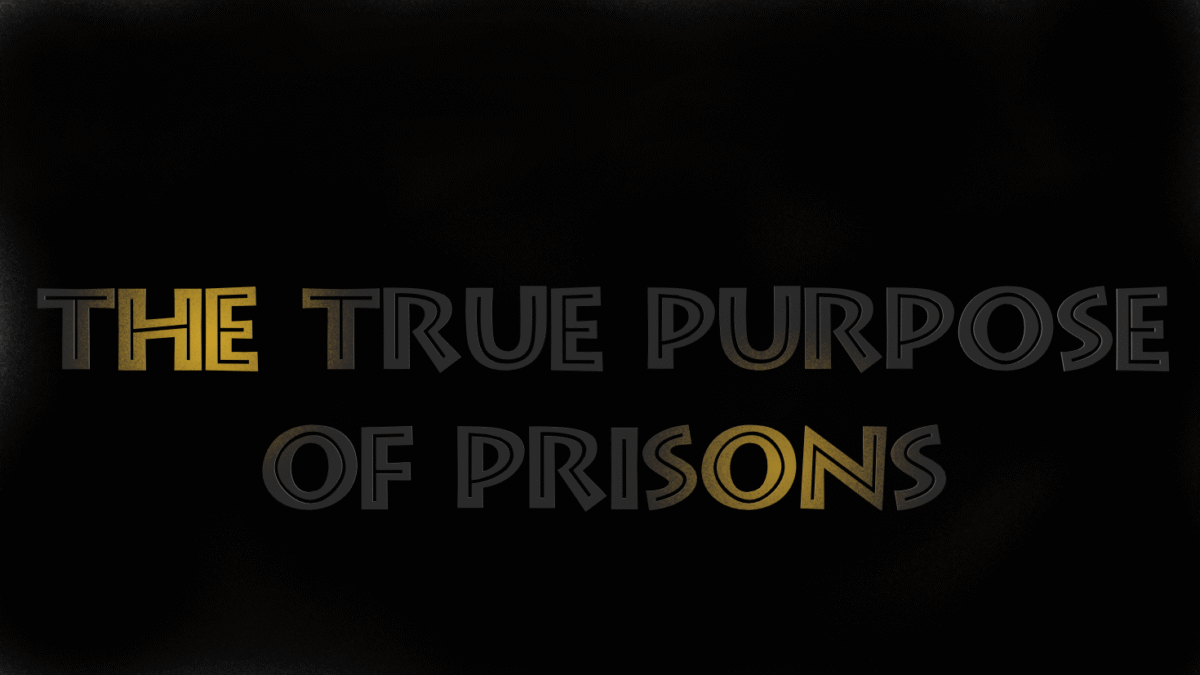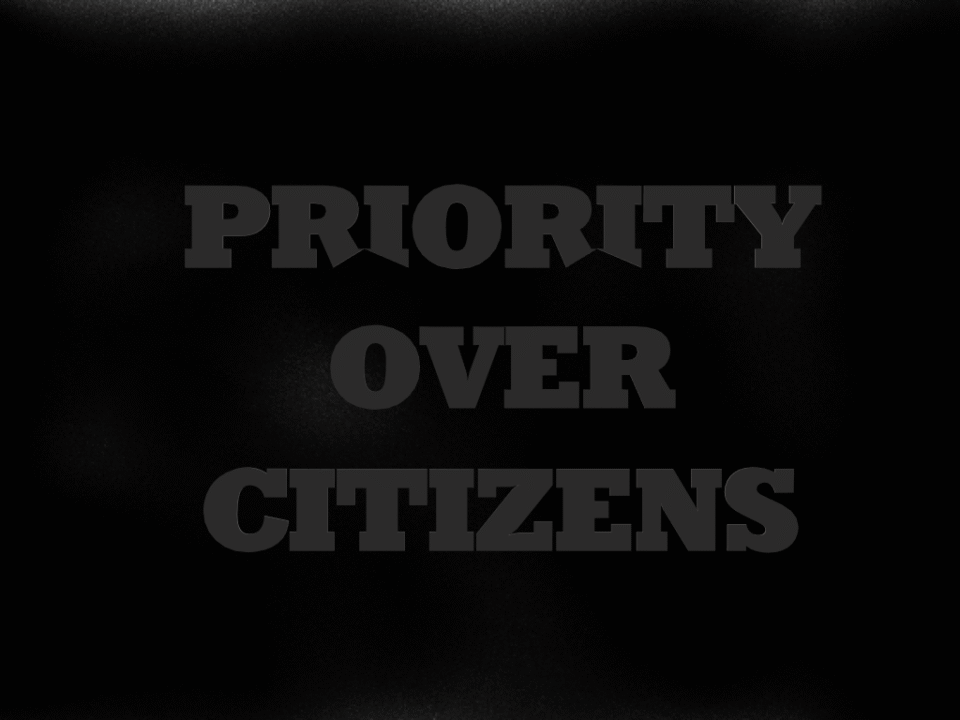
BAME
July 14, 2025
Does the system prioritize process over people?
July 16, 2025What is the true purpose of prisons?
If the goals are rehabilitation and reduced recidivism, why are prisons often under-resourced in educational, vocational, and mental health programs, and what evidence supports their effectiveness?
The question “What is the true purpose of prisons?” is complex, as the answer involves a mix of theoretical justifications, historical evolution, and often a stark reality of how effectively (or ineffectively) they achieve these stated aims.
Historically and theoretically, prisons serve several distinct purposes
Retribution (Punishment):
Core Idea: This is often seen as the most basic purpose – to punish offenders for the wrongs they have committed. It’s about “just deserts” or society’s right to inflict suffering proportionate to the harm caused. The punishment is seen as an end, satisfying a moral or emotional need for justice.
How it applies: Imprisonment deprives individuals of their freedom, time, and autonomy, which are considered a form of suffering for the crime committed
Core Idea: To discourage future criminal acts.
Specific Deterrence: Aims to prevent the individual offender from committing further crimes by making the experience of imprisonment so unpleasant that they choose not to re-offend.
General Deterrence: Aims to deter the public from committing crimes by showcasing the negative consequences (imprisonment) that offenders face.
How it applies: The existence of prisons and the threat of incarceration are meant to act as a powerful disincentive to criminal behaviour.
Incapacitation (Public Protection):
Core Idea: To protect society by physically removing dangerous or repeat offenders from the community, thus preventing them from committing further crimes while incarcerated.
How it applies: During the period of imprisonment, an individual cannot victimize the public outside the prison walls. This is often cited as a primary benefit, especially for violent or persistent offenders.
Rehabilitation (Reform/Reintegration):
Core Idea: To transform offenders into law-abiding citizens by addressing the underlying causes of their criminal behaviour (e.g., lack of education, job skills, substance abuse, mental health issues). The goal is to equip them with the tools to lead productive lives upon release.
How it applies: This involves providing education, vocational training, therapy, counselling, and programs aimed at changing criminal thinking patterns. Upon release, the hope is they will be less likely to re-offend.
Restoration (Reparation/Healing):
Core Idea: While less central to traditional prison functions, this purpose focuses on repairing the harm caused by crime, often involving communication between victims and offenders, restitution, and community involvement. It aims to restore relationships and address the needs of victims.
How it applies: In some systems, prisons might facilitate restorative justice programs, though these are more commonly applied as alternatives to traditional incarceration or alongside it.
The Reality vs. The Ideal:
While these are the stated theoretical purposes, the “true purpose” in practice is often debated and highly criticized:
Effectiveness of Deterrence: Research often shows that the certainty of apprehension, rather than the severity of punishment (like long prison sentences), is a more effective deterrent. Recidivism rates remain high in many countries, suggesting specific deterrence is often limited.
Challenges of Rehabilitation: Many prisons struggle to provide adequate rehabilitative programs due to underfunding, overcrowding, and a primary focus on security. The prison environment itself can be counterproductive, potentially fostering a “school of crime” rather than reform.
The Cost: Incarceration is incredibly expensive for taxpayers, diverting resources that could be used for preventative measures or community-based solutions.
Part3
Social Impact: Mass incarceration can destabilize families and communities, particularly those already marginalized, contributing to cycles of poverty and crime across generations.
Incapacitation – A Double-Edged Sword: While it protects society during incarceration, the lack of effective rehabilitation can mean that individuals are released eventually, potentially more resentful and less equipped to function lawfully than when they entered.
The “true purpose” of prisons is therefore a complex blend of these theoretical ideals, often clashing with practical realities.
While most societies agree on the need for public safety and accountability for serious crimes, there’s an ongoing, critical debate about whether current prison systems are the most effective, humane, or economically viable means to achieve these goals, particularly regarding rehabilitation and long-term crime reduction.
Many argue that while incapacitation and retribution remain central functions, the system often falls short on deterrence, and significantly on effective rehabilitation and restoration
Part2
These data are not a full picture of prison education – delivery outside of the primary PEF contracts, including all DPS provision, is not captured in this report. Private prisons which sit outside of PEF and the youth estate which has different education processes are also out of scope for this report.
Prison education is a devolved matter in Wales and therefore Welsh prisons are also out of scope for this report. More information on the major caveats of this publication can be found in the technical guidance published alongside this report or in the footnotes of the relevant data tables.
In addition to this bulletin and the tables based on data from the CURIOUS system for March 2019 to April 2020 we are publishing tables for the previous year’s data.
These tables provide statistics for prisoner education from March 2018 to April 2019, the last year data were collected through the Offender Learning & Skills Service (OLASS) system. These OLASS statistics are not covered by this bulletin.
In the year ending 31 March 2020, 55,099 prisoners completed an initial assessment2 which was registered on the CURIOUS system. Initial assessments are taken before prisoners engage in learning and are separate to courses.
A similar number of prisoners took Maths initial assessments (53,101) and English initial assessments (53,247) in the year ending March 2020, with the vast majority (51,249) taking both. In total there were 57,284 Maths and 57,416 English initial assessments in the year ending 31 March 2020.
There are more initial assessments than prisoners taking them as it is possible for a Prisoner to take more than one initial assessment in each subject. Initial assessments provide an indication of someone’s levels of English and maths (see table below).
71% of prisoners that took at least one initial assessment were aged 25 – 49, 18% were 18-24 and 11% were aged 50 and over.
Part4
The lowest rate of achievement was for Functional courses in English and Maths at 54%. 26% of prisoners participating in courses had a learning difficulty / disability confirmed through an LDD assessment, this is slightly lower than the 29% of those at initial assessment
All other characteristics of prisoners participating in courses were very similar to those taking initial assessments. 30,168 prisoners participated in functional courses and 16,329 (54%) achieved at least a partial grade / level 17,680 prisoners participated in English functional courses and 51% (9,038) at least partially achieved a grade / level. 16,991 prisoners participated in Maths functional courses and 50% (8,431) achieved a grade / level.
Tables 5 and 6 accompanying this publication contain information on all courses taken, these are different to initial assessments. The total number of Prisoners participating in courses was 67,663. The majority were aged 25-49 (70%), with the next largest group being 18-24 (18%) and the remainder being over 50 (12%).
These proportions are very similar to those for initial assessment figures and have the same comparison to the wider population; a higher proportion of young offenders were participating in learning. Gender and ethnicity figures for participation are also very similar to initial assessment figures.
A slightly lower proportion participating in these courses were assessed as having a learning difficulty / disability — 26% compared to the 29% in the English and maths initial assessments. 78% (53,111) of prisoners achieved a full or partial grade / level in at least one of the courses they participated in.
The rate of achievement for Functional courses in English, Maths and ICT was the lowest at 54%. All other rates of achievement were 69% or above.
Part6
Most charities working in the criminal justice system work at the individual support level. However, charities that participated in our research emphasised that they would like to be able to work at a more systemic level through advocacy, lobbying and coordinated action for reform.
However, this work requires long-term funding, and is often best supported by unrestricted funding, which is not generally available. Increasing funding in this area could increase the number of interventions focused on supporting, strengthening, and expanding existing advocacy initiatives.
Charity sector funding in this area Only 1.5% of specialist criminal justice charity funding is going to organisations who are primarily focused on political advocacy and influencing. This is likely influenced by the fact that two thirds of charitable funding is statutory funding, of which none is likely to go to advocacy.
Moreover, the turbulent policy environment and shifts within the criminal justice system have made it hard for independent funders to know where to invest. Small changes in policy towards evidence-based approaches, such as reducing the use of ineffective short sentences, could have significant positive impacts for many people currently trapped in the system.
The government’s inclusion of crime reduction as part of the ‘levelling up’ agenda suggests there is a window of opportunity for ambitious funders to invest in organisations who can influence political audiences. NPC’s own polling also shows that the public ranks reduced crime as a top levelling up priority.
Education In Prison
Statistician’s Comment Figures presented in this statistical release show prison education statistics for the 12 months ending 31 March 2020. Most of the time period covered by this publication was unaffected by the Covid-19 pandemic and the effect on figures presented in this publication will be minimal if at all.
Prisoners that are interested in education take initial assessments before participating in courses. 55,099 prisoners completed an initial assessment in either English or Maths with the majority completing both. More than half of initial assessment results were at entry level 1 to 3, which are the levels below GCSE.
The characteristics of prisoners taking an initial assessment were similar to that of the prison population overall; 94% were male, 71% were aged 25-49, with an almost identical distribution of recorded ethnicity. 29% had a learning difficulty / disability (LDD) confirmed through an LDD assessment.
After taking initial assessments prisoners can participate in education courses. In the 12 months ending 31 March 2020, 67,663 prisoners participated in courses with 78% achieving at least a partial grade/level. 26% of prisoners participating in courses had an LDD confirmed through an LDD assessment, this is slightly lower than at initial assessment.
Functional Skills are the fundamental English, Maths and ICT skills that people need for their working and personal lives. 30,168 prisoners participated in functional skills courses and 54% achieved at least a partial grade/level.
Prison education is an important part of any prison’s regime. Improving prisoner literacy and numeracy, providing vocational training, and other opportunities for personal development can give prisoners the knowledge and skills they need to get jobs on release and turn away from crime.
Prison education is proven to have a positive impact; prisoners who engage with prison education are less likely to reoffend.1 In 2016, responsibility for the budget which was used to commission most prison education in England moved from the Department of Education to the Ministry of Justice and in 2019 new education contracts where established.
This reformed system moved decision-making on prison education closer to prison governors, who would be free to commission the education needed via two complementary frameworks – the Prison Education Framework (PEF) and Dynamic Purchasing System (DPS).
PEF provision includes a core curriculum of English, Maths, IT and English for Speakers of Other Languages (ESOL), whereas DPS provision is more niche and flexible, designed to allow governors to commission bespoke shorter-term provision, including careers guidance and sector-specific training such as roofing or rail construction based on identified job market needs.
Governors may use these complementary systems to make informed decisions on the education provided in their individual prison. This report contains data from Year 1 of the new PEF contracts, April 2019 to March 2020 inclusive.
It includes data on initial assessment of prisoners’ English and maths levels on arrival, numbers participating in education, and data on the level of achievement in English, maths, and vocational training courses.
Part3
Compared to the prison population, a slightly higher proportion of younger prisoners took at least one initial assessment. Female offenders accounted for 6% of prisoners taking at least one initial assessment, compared to 5% of the prison population.
72% of prisoners that sat at least one initial assessment with a recorded ethnicity declared it as White, with the 2nd largest group declaring Black/ African/ Caribbean/ Black British at 13%.
Those from an Asian/ Asian British group comprised 8% of initial assessments, Mixed/ Multiple Ethnic Group comprised 5% while 2% were from Other ethnic groups.
29% of prisoners that took an initial assessment had a learning difficulty / disability (LDD) confirmed through an LDD assessment. The remaining 71% were either confirmed not to have an LDD or were not assessed4.
These proportions varied by ethnic group, with the highest rate of confirmed LDD among the white ethnic group: • 33% from White ethnic group • 25% from a Mixed / multiple ethnic group •
20% from Black African / Caribbean / Black British ethnic groups • 18% from Asian / Asian British ethnic groups • 17% from Other ethnic groups • 30% where ethnicity was Unknown / not provided
Participation & achievement 67,663 prisoners participated in courses. 59,891 prisoners participated in a course below level 2, 26,006 prisoners participated in a course of level 2 or higher.
Prisoners can take multiple courses. In total, 78% (53,111) of prisoners participating in courses achieved at least a partial grade / level6 There were a small number of courses at level 4 or above (all courses above A-Levels) where 100% of participants achieved at least a partial grade or level.
Part5
Political factors
This section of the map examines the role of political factors within the criminal justice system. Policy can be reactive to perceptions of public attitudes. For example, ‘tough on crime’ is often seen as a vote winner (even though, as detailed above, public attitudes are more nuanced than this).
More often though, the relationship between policy and public attitudes is symbiotic: as well as reacting to them, political discourse can, as seen in political discourse around immigration, shape and reinforce popular views.
This section of the map shows how a ‘tough on crime’ ideology fuels a prison expansion agenda. This then limits openness to a reform approach and to alternative sentencing, as government could risk being seen as ‘soft on crime’.
This narrative is particularly prevalent now, with the prison population increasing, stricter sentences being introduced for serious offences, and the continued use of ineffective short sentences which do little to address the causes of crime and reoffending.
This political narrative and agenda also make the system less open to charity sector involvement in service delivery, because charities are more likely to favour restorative and person-centred approaches, which can be seen as running counter to a ‘tough on crime’ approach.
Leverage points Breaking reoffending cycles in the criminal justice system | Group 2: Political factors Our mapping process emphasises two principals—and linked—leverage points within the political factors in the system: ‘advocacy for criminal justice reform’ and ‘stable long-term funding for reform approaches’.




